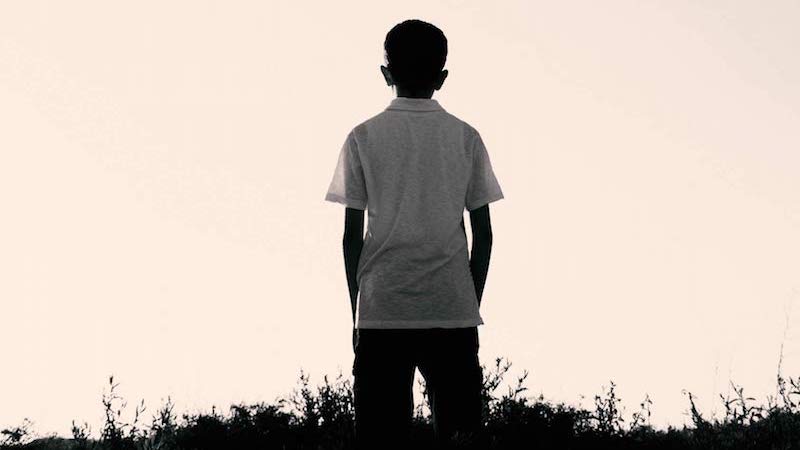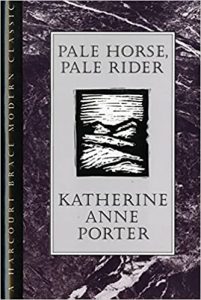
Our five alarm fire of fantastic reviews this week includes Chris Power on Catherine Lacey’s Pew; Audrey Woolen on Katherine Anne Porter’s Pale Horse, Pale Rider; Kai Cheng Thom on Meredith Talusan’s Fairest; Christian Lorentzen on Lionel Shriver’s The Motion of the Body Through Space; and Judith Shulevitz on J.M. Coetzee’s The Death of Jesus.
“It is weird, and Lacey has fun with the weirdness, using Pew to plumb the oddness and hypocrisies of this nameless, supposedly devout small town in the American south. Lacey has always been an economical writer, and she is as taut as she’s ever been here: each of the book’s seven chapters is a day long and it moves relentlessly towards the Forgiveness festival, the nature of which remains menacingly unclear … Pew’s silence encourages others to project on to them, or simply talk at them as if they were a microphone. These monologues make sections of the book read like Rachel Cusk’s Outline trilogy blended with the creeping unease of Ari Aster’s horror film Midsommar … The competing mysteries Lacey sets running in Pew make her readers hypervigilant: every exchange must be parsed for clues, every location analyzed for meaning. … Pew is a confusing fable—there’s too much messy realism in it for its lesson to be easily understood—but it is within its messier reaches, and its concerns with inequality and prejudice, that its boldest and most brilliant effects are found.”
–Chris Power on Catherine Lacey’s Pew (The Guardian)

“I am in the bath, on my phone, floating across more tiled universes. I find an online scan of Katherine Anne Porter’s 1939 novella Pale Horse, Pale Rider, and I eagerly read it from beginning to end, refilling the hot water every twenty minutes. I didn’t plan to start or finish it, but once I had started, I couldn’t not finish. The story makes me weep with such ferocity that I imagine I am filling the rapidly cooling bath with my tears. I feel purposeful in my weeping, designed for it, like a faucet. I have found a strange yet exact answer to my friend’s question, as if hurtled with intention from another woman’s sickness, clean across a century. Out of the sky: This! This is what it was like—to die and then live … The truest, most heartbreaking part of Pale Horse, Pale Rider is the anticlimax of Miranda’s survival. On the other side, one of the first things Miranda does is draft a shopping list: lipstick, perfume, stockings. Objects, objects for bodies. The sunlight doesn’t feel warm. Months have passed; Adam is already dead. After she has touched the muddy sediment of innate life, this world seems cavernous, whistling in her ears. Under the shadow of hope, she promises herself: ‘Soon I shall cross back and be at home again. The light will seem real and I shall be glad when I hear that someone I know has escaped from death. I shall visit the escaped ones and help them dress and tell them how lucky they are, and how lucky I am still to have them.’ On her way out of the hospital, she wonders if she’ll be able to return to her apartment. She hasn’t paid rent all this time.”
–Audrey Wollen on Katherine Anne Porter’s Pale Horse, Pale Rider (Bookforum)
“Crisp, lucid prose belies the fairy-tale quality of Talusan’s lived experiences … like the best of trans memoirists, Talusan refuses the call to sensationalism and political proselytizing that so often characterizes writing about ‘different’ or ‘exceptional’ people. Instead, Talusan spends much of the book focusing on the sensory, emotional, and relationship details that give texture to any life … Talusan’s spare, journalistic prose blossoms into a lyrical poeticism that further distinguishes Fairest as a work of literary nonfiction … By painting her life in such exquisite detail, Talusan breathes new life into the well-worn body of the transgender life story, showing the reader deep wells of complexity where, in a less truthful or less talented writer’s hands, oversimplification and cliché might reign. Talusan leans into the pain and heartbreak—as well as the beauty and hope—that have emerged from each of her choices, allowing her full humanity to shine through … while Talusan is certainly politically aware, she is neither pedagogue nor polemicist. In Fairest, she grants herself the freedom to tell her story on her terms, which is a kind of magic all its own.”
–Kai Cheng Thom on Meredith Talusan’s Fairest (The Boston Globe)
“Shriver has written a satire on fitness zealotry with a side serving of culture-war intrigue … On the culture-war front, Shriver’s tone tends towards the didactic … it takes aim at liberal hypocrisy…but the hyperbole it trades in, however amusing, is unlikely to win converts to [Shriver’s] side of the debate. Far more of the novel is devoted to Remington’s quixotic quest to become a machine capable of massive feats of endurance. It’s hard not to share Serenata’s dim view of this project, since Shriver has stacked the deck in her favour, and by the novel’s final third what began as a nimble romp becomes a dutiful slog to a predictable resolution. Along the way, Shriver’s finest writing addresses abstract questions such as the relation of the self and body across time … poignant insights about ageing are delivered inside a novel that goes down like a sour pill. Shriver’s bitterness is reminiscent of VS Naipaul’s, but his great subjects were postcolonial revolution and the agonies of decolonisation. The stakes of Shriver’s drive-by declinist aphorisms are rather less world-historical than she makes them out to be … Shriver’s rage against the dying of various lights makes for a diverting spectacle, if not always a coherent novel.”
–Christian Lorentzen on Lionel Shriver’s The Motion of the Body Through Space (Financial Times)
“It’s hard to imagine anyone other than Coetzee making radical skepticism about the ontological status of numbers and the realness of reality central to the message of God’s appointed messenger. Coetzee, a Nobel Prize winner from South Africa, studied mathematics and linguistics and was a computer programmer before he became a writer. You could call him a novelist of ideas, but also a philosopher working in fiction. Many of Coetzee’s recent novels have the stripped-down quality of philosophical fable. His prose has never been ornamental, but in his later years it has grown particularly spare. This is not unpleasant; rather, it’s disorienting, then hypnotic. When Coetzee withholds back story, the reader must learn to tolerate mystery … In a lecture given in 1987 upon accepting the Jerusalem Prize, Coetzee dwelled briefly on Don Quixote. His comments clarify, a little, what he is doing with the novel in this trilogy. Coetzee unpacks the ‘why?’ he has David ask in response to Simón’s assertion that fantasy is unreal and the unreal is dangerous. Don Quixote, says Coetzee, is making the opposite claim. Its question is: How does literature take us out of our delusions, our world ‘of violent phantasms,’ and bring us to ‘a true living world?’ ”
–Judith Shulevitz on J.M. Coetzee’s The Death of Jesus (The New York Times Book Review)

